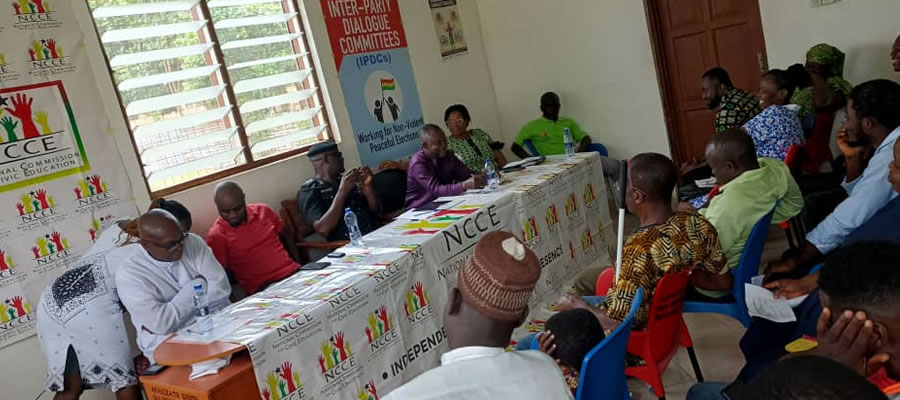

Literacy and Education
Literacy is defined as one’s ability to read and write a simple statement with understanding. The more people in a given population could read, write and understand simple statements, the better informed they become and consequently the more active they partake in decision making. Figure 3.2 indicates that majority of the District population (87.0%) 11 years and older are literates against 13.0 percent who are not literates. Also, greater proportion of males (90.7%) than females (83.5%) is literate in the District (Figure 3.2)
Figure 3.2: Population 11 years and older by literacy status and sex
Of all the literates, 68.9 percent could read, write and understand simple statements in English and Ghanaian Language while less than one percent (0.4%) of them are literate in English and French. The proportion of literates in English, French and Ghanaian Language is 1.3 percent as shown in Table 3.9. However, the proportion of males who are literate in English and Ghanaian Languages are 74.4 percent more than that of females (63.5%). On the other hand, more females (28.0%) than males (16.7%) are literate in Ghanaian Languages only. The proportion of females who are not literate is 65.8 percent more than the corresponding proportion for males of 34.2percent. This significant difference could be attributed to historical practices whereby the girl child is discriminated at when it comes to education. Among the age groups, the highest proportion (30.2%) of not literates is recorded by persons 65+ years whilst the age group 15-19 years records the highest (16.0%) for literates. This might be the positive effects of some educational social intervention programmes instituted to improve enrolment in basic schools. Table 3.9 also shows that females in their fertility age period (15-49 years) forms 46.0 percent of the proportion of females who are not literates. This high level of illiteracy among this age group of females can affect adversely maternal and infant mortality.
Population 11 years and older by sex, age and literacy status
Education is essential for the development of the requisite human resources needed for accelerated socio-economic development of every society. It is the process of acquiring knowledge, skills, values and attitudes to fully develop individual capacities for societal wellbeing. Table 3.9 looks at the literacy status of the population aged 11 years and older in the District. The District recorded 68.9 percent for the population who are literate in both English and Ghanaian Language, those who are literate in a Ghanaian language only (22.3%) is higher than English language only (7.0%). Slightly more females are literate in English and Ghanaian Language only compared to males (Table 3.9).
Table 3.9: Population 11 years and older by sex, age and literacy status
School Attendance
Table 3.10 presents information on population three years and older by level of education, currently attending and attended school in the past. The Table shows that 46.2 percent of the population (three years and older) currently attending school are in primary school. The proportion of males attending school who are currently in primary school is 46.4 percent slightly more than the corresponding proportion for females (45.9%). The proportion of males attending school who are in JSS/JHS is 20.9 percent slightly more than the corresponding value of 20.2 percent for females.
The proportion of females who are attending school and who are in post middle/secondary school level is 1.1 percent significantly more than the corresponding value of 0.5percent for males. Further, the proportion of males and females attending school who are in tertiary institutions are roughly the same at 1.3 percent and 12 percent respectively. When all three post-secondary school institutional groups are combined (that is vocational/technical, postsecondary schools and colleges, and tertiary institutions such as universities, the shares of those attending school for both male and females are exactly 2.9 percent. Perhaps, this combined equal figure reflects female progress relative to male at the upper end of the educational ladder.
Table 3.10: Population 3 years and older by level of education, school attendance and sex
Date Created : 11/17/2017 4:29:26 AM











 facebook
facebook
 twitter
twitter
 Youtube
Youtube
 +233 593 831 280
+233 593 831 280 0800 430 430
0800 430 430 GPS: GE-231-4383
GPS: GE-231-4383 info@ghanadistricts.com
info@ghanadistricts.com Box GP1044, Accra, Ghana
Box GP1044, Accra, Ghana